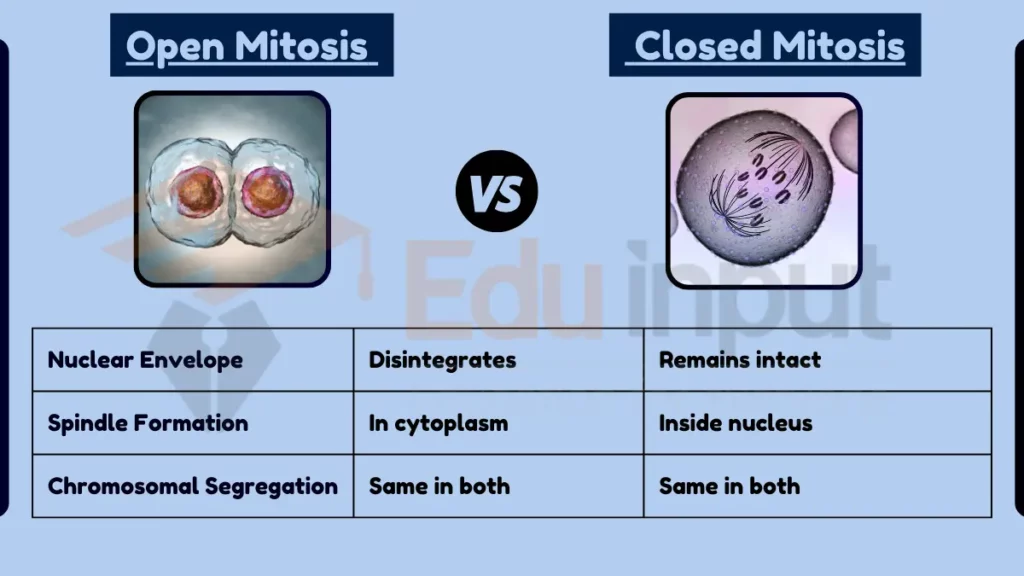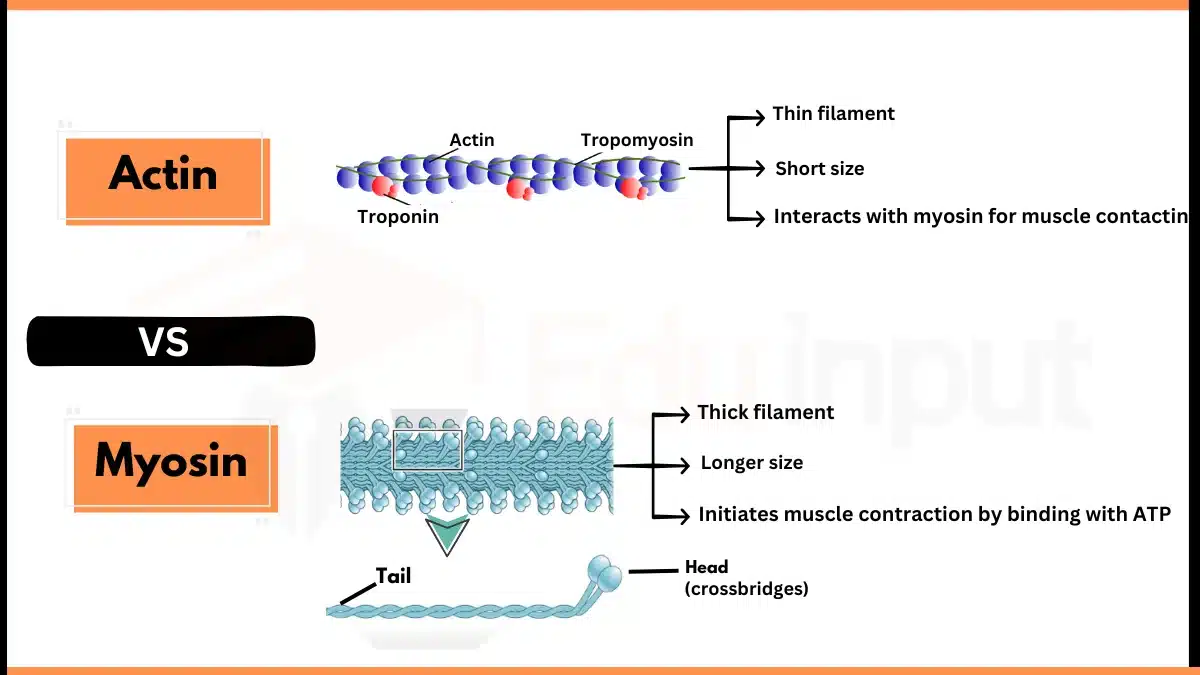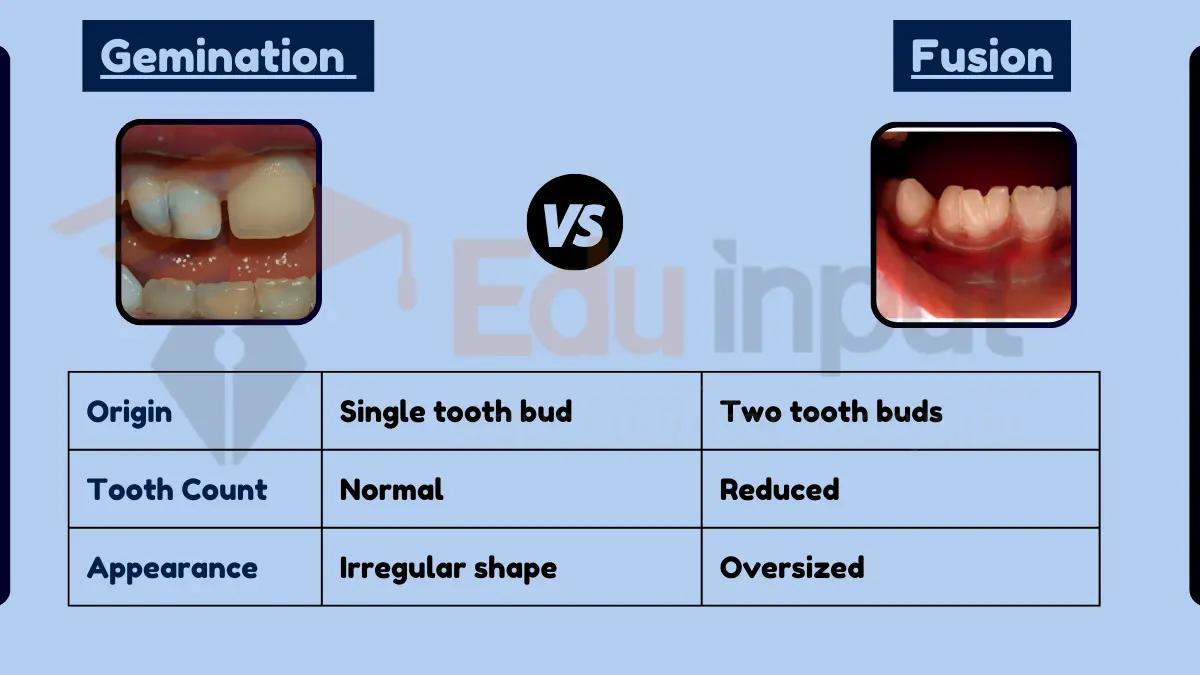Difference Between Open and Closed Mitosis
January 2, 2024
Table of Contents
Key Difference
Open and closed mitosis are two types of cell division processes in eukaryotic cells, differing primarily in the behavior of the nuclear envelope during mitosis. In open mitosis, the nuclear envelope breaks down early in mitosis, allowing the mitotic spindle to interact directly with the chromosomes.
This is the process commonly seen in animals. In closed mitosis, the nuclear envelope remains intact, and the spindle forms within the nucleus. This type is typically observed in some fungi and algae.

Comparative Analysis
- Nuclear Envelope Dynamics:
- Open Mitosis: Nuclear envelope disintegrates.
- Closed Mitosis: Nuclear envelope remains intact.
- Spindle Formation:
- Open Mitosis: Spindle forms in the cytoplasm.
- Closed Mitosis: Spindle forms inside the nucleus.
- Chromosomal Segregation:
- Both processes involve the segregation of chromosomes into daughter cells.
- Cell Types:
- Open Mitosis: Common in animal cells.
- Closed Mitosis: Found in some fungi and algae.
- Regulatory Mechanisms:
- Open Mitosis: Requires additional regulation for nuclear envelope breakdown and reformation.
- Closed Mitosis: Requires coordination of spindle dynamics within an enclosed nucleus.
Table Summary
| Feature | Open Mitosis | Closed Mitosis |
|---|---|---|
| Nuclear Envelope | Disintegrates | Remains intact |
| Spindle Formation | In cytoplasm | Inside nucleus |
| Chromosomal Segregation | Same in both | Same in both |
| Cell Types | Animal cells | Some fungi, algae |
| Regulatory Mechanisms | Envelope breakdown/reformation | Spindle within nucleus |
Also Read:
File Under:





Leave a Reply